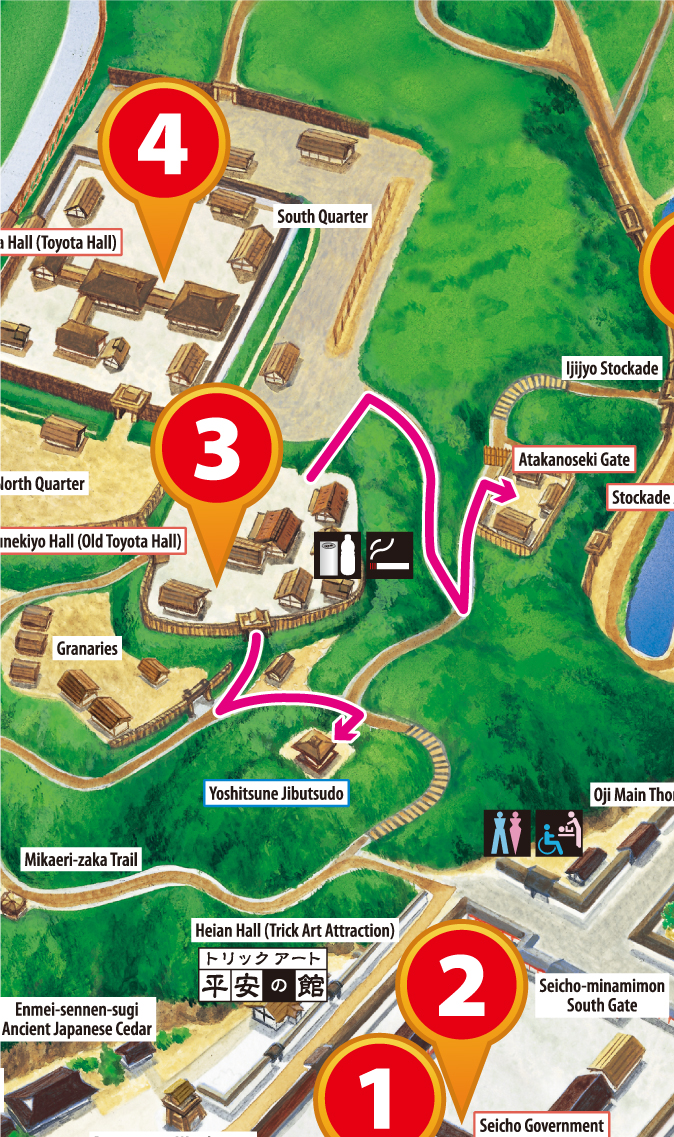■ Facility ③
Tsunekiyo Residence
The architecture of Tsunekiyo Residence a.k.a. the Old Toyota Hall is a typical style of Gozoku powerful regional clan around the middle of the 11th century where Fujiwara no Tsunekiyo, the official of Mutsu Kokufu (capital of Mutsu) at that the time moved to Esashi. Thatched roofs on the top of the penetralia and three Nishinotai twin buildings on the west side is the hallmark of the style of that time. The hall is accompanied with the Shinden main house, a kitchen, a stallion and a night duty station, of which the style is pre-Shindenzukuri, i.e. they are not yet connected together with corridors.
A Chinese white porcelain four-eared vase excavated from the Toyota-kan ruins, located about 5 minutes by car from our garden, is on display at the Esashi Local Culture Museum.


 Atelier
Atelier
 Granaries
Granaries
Detour spot
Yoshitsune Jibutsudo
At the mercy of the wind and tide of the era, Minamoto no Yoshitsune was forced to commit Seppuku-suicide. This worship hall which was built to pray for the repose of his soul is replicated based on the architecture style of Heian period. The final moment of Yoshitsune is restaged in this hall and Musashibo Benkei, a legendary Yoshitsune's retainer, is standing to protect Yoshitsune.


Detour spot
Atakanoseki Gate
Having been wanted by his half-brother Yoritomo, Yoshitsune and his retainers headed to Oshu in the disguise of mountain hermit. When they were intercepted by barrier-keepers at Atakanoseki gate, Musashibo Benkei performed his consummate tact which eventually gave them a passage. This is known in one of the famous scenes in an Edo Kabuki-Japanese dance drama theater production "Kanjincho". The real Atakanoseki gate was allegedly located in Komatsu city Atakamachi in Ishikawa.




